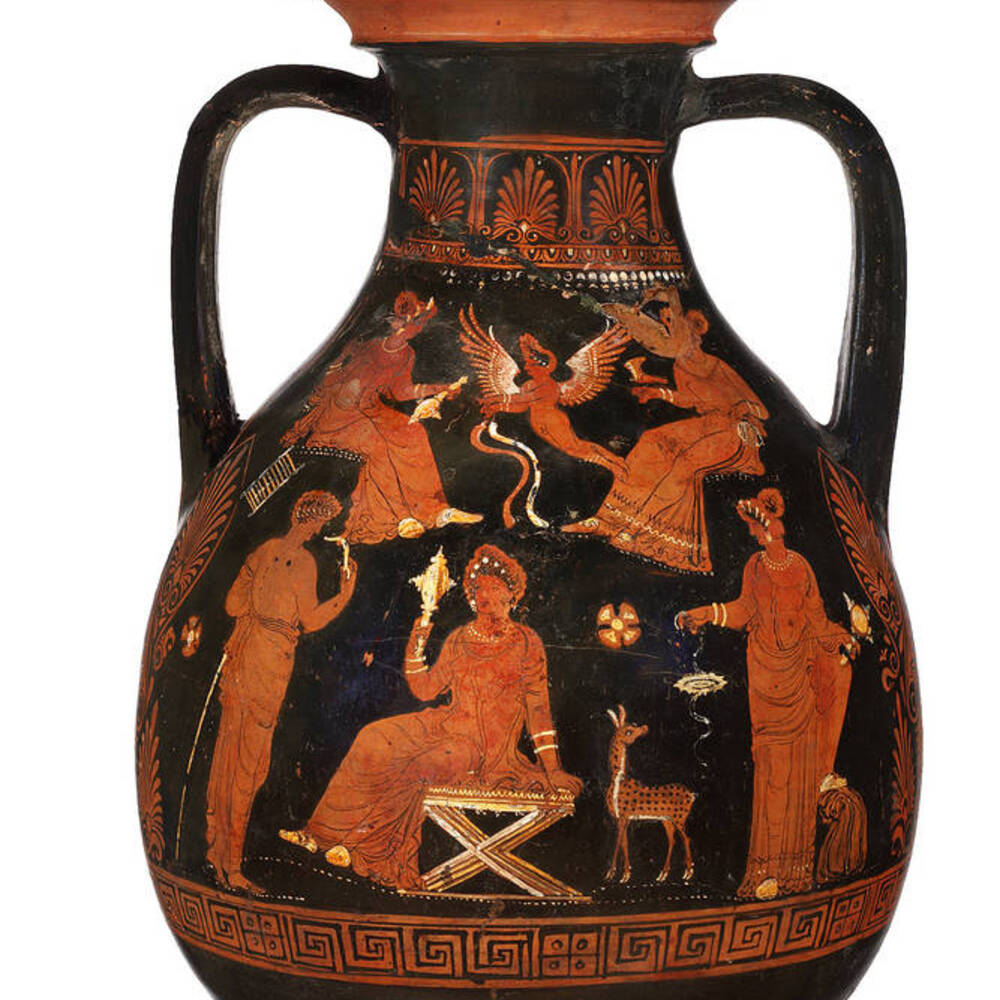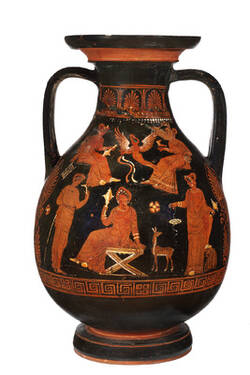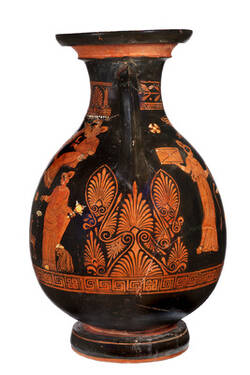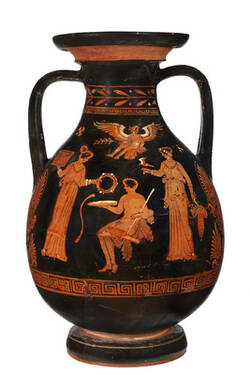On both sides of the bulbous vessel, which is called a pelike, wedding scenes are depicted. However, no concrete events of the ceremony lasting several days are depicted, but individual images and attributes that refer to the most decisive event in the life of women in antiquity. We see attractive young people, richly adorned and carrying all kinds of accessories of courtship: Mirrors, wreaths, jewellery bands, wands, doves, a strigilis and an iynx. The latter is the small white object in the right hand of the standing woman: a whirring cog that was used in Greek love magic. With sayings like "magic cog, move into my house you the man I love" one conjured the beloved. The winged god of love, Eros, on either side only illustrates once more the all-encompassing theme of love. Unfortunately, it is not possible to say whether the Apulian red-figure vessel was used in a wedding context or whether it was rather made for sepulchral use, perhaps for a woman who died young and did not achieve her most important goal, marriage.
Further Media
Today, a vase is most commonly associated with flowers. But in the early 1700s, when the scholarship of Greek vases first developed, the word also referred to every kind of ancient pottery. As a result, the term ‘vase painting’ has remained a term used by experts in the field.
To imagine the omnipresence of pottery ware in ancient times, just think of our world with no glass or plastic containers, and no metal containers on ships, trains, or trucks. Imagine all those goods being transported in pottery vessels.
Of course, simple ceramic vessels for transport were not decorated. But, apart from those vessels, there were specially shaped and painted vases, in particular for religious or ritual purposes. Written sources from antiquity have given us many terms for the different shapes of vases, though as yet scholars have not successfully ascribed these terms unequivocally to the known individual styles.
Very few surviving vases are of such outstanding quality as those on show here. Nonetheless, for research, quantity also matters! Hundreds of thousands of painted vases have been and still are meticulously analysed and studied. In this way, we can gain detailed insights into local preferences, motifs, and technical developments – and even identify individual vase painters, either because they signed their works or have a distinctive style.
Red-figure vase painting – as it is known – which emerged in Athens around 530 BC, may well be the most significant stylistic development. Red-figure vase painting came from the ingenious idea of reversing the previous technique for black figures on a red ground. By leaving red areas unpainted, the figures took on the colour of the clay; the surrounding areas were covered with a slip which turned black when fired. The result: red figures on a black background. This new style was greeted enthusiastically, and suddenly only a few potters still continued the older tradition of black-figure vase painting. The trend to red-figure vase painting lasted several generations and is found well beyond Athens itself.
- Location & Dating
- c. 340/330 B.C.
- Material & Technique
- Fired clay
- Dimenions
- H. 44,1 cm, Dm. Mündung 19,1 cm, Dm. Gefäßbauch 28,0 cm, Dm. Fuß 16,7 cm
- Museum
- Skulpturensammlung
- Inventory number
- Dr. 526



